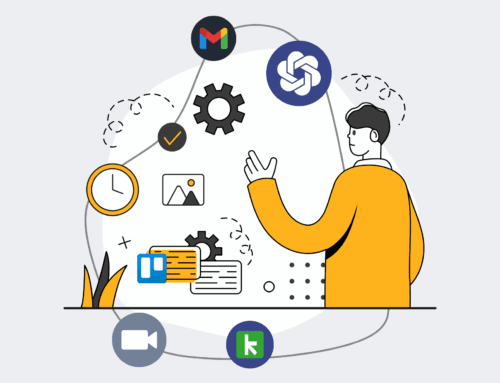From Chaos to Clarity: How Global Talent Solutions Centralized Disparate HR Data with Make.com and 4Spot Consulting
Client Overview
Global Talent Solutions (GTS) is a burgeoning international conglomerate, serving over 5,000 employees across a diverse portfolio of industries including tech, finance, and manufacturing. Their HR department, a critical linchpin in their global operations, is responsible for everything from talent acquisition and onboarding to payroll, performance management, and employee relations. As GTS experienced rapid growth through both organic expansion and strategic acquisitions, their HR infrastructure evolved in an ad-hoc manner, leading to a complex web of siloed systems. Each business unit often adopted its own preferred tools, resulting in a fractured data landscape that lacked cohesion and centralized visibility.
Before engaging 4Spot Consulting, GTS’s HR team was grappling with the challenges of managing human capital data across no fewer than five distinct Human Resources Information Systems (HRIS), multiple Applicant Tracking Systems (ATS), several payroll providers, and a scattering of specialized platforms for benefits administration, learning and development (L&D), and performance reviews. This decentralized approach, while offering initial flexibility to individual business units, became an insurmountable obstacle to strategic workforce planning, accurate reporting, and efficient HR operations at a company-wide level. The sheer volume of data, coupled with its dispersion, created a bottleneck that hindered GTS’s ability to leverage its most valuable asset: its people data.
The Challenge
The primary challenge for Global Talent Solutions was a direct consequence of its rapid, uncoordinated growth: profound data fragmentation. HR data, essential for strategic decision-making and operational efficiency, was trapped in disparate systems that did not communicate with one another. This led to a cascade of critical issues:
-
Manual Data Entry and Reconciliation: HR staff spent an inordinate amount of time manually entering data across multiple systems. For example, a new hire’s information might need to be input into the ATS, then the primary HRIS, followed by the payroll system, and finally the benefits portal. Any update – a change in address, a promotion, or a new certification – required repetitive manual updates across several platforms. This process was not only time-consuming but highly prone to human error, leading to inconsistencies and inaccuracies.
-
Lack of a Single Source of Truth: Without a centralized database, GTS lacked a holistic view of its workforce. Reports generated from one system often contradicted those from another, making it impossible to obtain reliable insights into key metrics such as headcount, turnover rates, or talent pipeline status. This undermined strategic planning and delayed crucial business decisions, especially concerning recruitment, resource allocation, and compensation analysis.
-
Inefficient Onboarding and Offboarding: The fragmented data ecosystem made the onboarding process cumbersome and inefficient. Delays in system access, payroll setup, or benefits enrollment were common, leading to a poor initial experience for new employees. Similarly, offboarding was complex, risking data security vulnerabilities and compliance issues if system access wasn’t consistently revoked across all platforms.
-
Delayed and Inaccurate Reporting: Generating comprehensive HR reports – for executive summaries, compliance audits, or internal analysis – was a monumental task. Data had to be extracted from various systems, manually consolidated in spreadsheets, and then meticulously cleaned and formatted. This process could take days, sometimes weeks, by which time the data was often outdated. The lack of real-time insights meant HR leadership was often reacting to historical trends rather than proactively addressing current needs.
-
Compliance Risks: Maintaining compliance with labor laws, data privacy regulations (like GDPR and CCPA), and internal policies became increasingly difficult. The inability to track data changes across systems and ensure consistent data integrity exposed GTS to potential legal and financial risks.
-
Suboptimal Employee Experience: Employees often faced confusion or delays when trying to access their HR information, update personal details, or manage their benefits due to the scattered nature of HR services. This detracted from their overall experience and burdened HR with repetitive query handling.
In essence, GTS’s HR department was drowning in operational complexity, spending far too much time on administrative tasks and not enough on strategic initiatives that could truly drive business value. They needed a robust, scalable solution that could unify their disparate data sources, automate routine processes, and provide a single, authoritative view of their global workforce.
Our Solution
4Spot Consulting recognized that Global Talent Solutions’ core problem wasn’t a lack of data, but a lack of seamless data flow and integration. Our strategy centered on leveraging Make.com (formerly Integromat) as the foundational integration platform. Make.com’s visual builder, extensive library of pre-built app connectors, and powerful data manipulation capabilities made it the ideal choice to create sophisticated, automated workflows that could bridge the gaps between GTS’s diverse HR systems.
Our solution was designed around the principle of creating a centralized, real-time data hub. Instead of attempting to replace all of GTS’s existing systems – a costly and disruptive endeavor – we proposed an integration layer that would connect them, acting as the “nervous system” for their HR data. The objective was to ensure that critical employee data, once entered or updated in a primary system (e.g., the HRIS), would automatically propagate to all other relevant platforms, ensuring data consistency and accuracy across the board.
Key components of our Make.com-centric solution included:
-
API-First Integration: We prioritized connecting systems via their native APIs where available, ensuring robust and real-time data exchange. For systems without direct API access, we designed solutions using file parsing, SFTP transfers, or custom webhooks, demonstrating Make.com’s versatility.
-
Automated Data Synchronization: We designed intricate Make.com scenarios to automate the flow of data across GTS’s HR ecosystem. This included synchronizing new hire data from the ATS to the HRIS and payroll system, updating employee records (promotions, department changes) across all relevant platforms, and ensuring benefits enrollment data seamlessly reached the correct providers.
-
Data Transformation and Standardization: Recognizing that different systems often used varying data formats or naming conventions, we implemented robust data transformation modules within Make.com scenarios. This ensured that data was consistently mapped, cleaned, and standardized before being transferred, eliminating discrepancies and improving data quality.
-
Centralized Error Handling and Monitoring: We built in comprehensive error handling mechanisms and real-time alerts within the Make.com scenarios. This allowed GTS’s HR IT team to quickly identify and resolve any integration failures, ensuring minimal disruption to data flow. We also set up dashboards within Make.com to monitor workflow performance and data volume.
-
Phased Implementation and Scalability: The solution was designed to be implemented in phases, starting with the most critical and high-impact data flows (e.g., onboarding and core HRIS updates). This agile approach allowed for continuous feedback and refinement, minimizing risk and ensuring user adoption. The modular nature of Make.com scenarios also meant the solution could easily scale to accommodate future growth or integration needs.
-
Custom Reporting and Analytics Enablement: By centralizing data, even without building a new data warehouse, we laid the groundwork for enhanced reporting. We integrated Make.com with GTS’s preferred business intelligence (BI) tools (e.g., Tableau, Power BI) by funneling consolidated data into a structured format, enabling the creation of real-time, comprehensive HR dashboards and analytical reports that were previously impossible.
Our approach with Make.com transformed GTS’s HR operations from a series of disjointed manual processes into an interconnected, automated, and intelligent ecosystem. This not only addressed their immediate pain points but also provided a flexible foundation for future HR technology evolution.
Implementation Steps
The implementation of Global Talent Solutions’ HR data centralization project was a meticulous, multi-phase endeavor, executed collaboratively between 4Spot Consulting and GTS’s HR and IT teams. Our structured approach ensured minimal disruption and maximum effectiveness:
-
Discovery and System Audit (Weeks 1-3): We began with a comprehensive audit of GTS’s existing HR technology landscape. This involved detailed interviews with HR leads, IT personnel, and end-users across various departments and business units. We meticulously mapped out every HR system in use (e.g., Workday, SuccessFactors, ADP, Greenhouse, Taleo, various regional payrolls), identifying their primary functions, data points, and the current manual workflows connecting them. Critical pain points, data inconsistencies, and high-volume manual tasks were prioritized, forming the blueprint for our integration strategy.
-
Solution Design and Architecture (Weeks 4-6): Based on the audit, 4Spot Consulting designed a detailed integration architecture using Make.com. This phase involved:
-
Defining the “golden record” for employee data – determining which system would be the primary source for specific data fields (e.g., HRIS for employee ID, ATS for candidate status).
-
Mapping data fields between all connected systems, including identifying required transformations, standardization rules, and lookup tables for consistency (e.g., converting “Permanent Full-Time” from one system to “FT” in another).
-
Designing specific Make.com scenarios (workflows) for each critical data flow, such as “New Hire Onboarding Data Sync,” “Employee Update Propagation,” “Leave Request Automation,” and “Payroll Data Export.” This included detailing triggers, actions, routing logic, and error handling for each scenario.
-
Establishing security protocols and API access configurations to ensure data privacy and integrity.
-
-
Development and Integration (Weeks 7-16): This was the core development phase. Our consultants built the Make.com scenarios, connecting to GTS’s various HR systems. Key integrations included:
-
ATS to HRIS/Payroll: Automating the transfer of new hire data (personal details, job offer, start date) from Greenhouse and Taleo to Workday HRIS and ADP Payroll, eliminating manual entry for new employees.
-
HRIS to Benefits/L&D: Synchronizing employee status changes, department transfers, and personal updates from Workday to benefits administration platforms and internal L&D systems (e.g., Cornerstone OnDemand).
-
Performance Management to HRIS: Integrating performance review data from GTS’s custom appraisal system back into Workday for a more complete employee profile.
-
Data Cleansing and Backfill: Developing one-time Make.com scenarios to cleanse existing historical data inconsistencies across systems and to backfill missing records to achieve a consistent baseline for all employees.
-
Custom Reporting Data Mart: Creating workflows to extract consolidated, transformed HR data into a structured format (e.g., Google Sheets, a lightweight SQL database) that could then be easily consumed by GTS’s Power BI dashboards for real-time analytics.
-
-
Testing and Quality Assurance (Weeks 17-20): Rigorous testing was performed in a sandbox environment. This included:
-
Unit Testing: Verifying individual Make.com modules and connections.
-
Integration Testing: Ensuring end-to-end data flow across multiple systems, including edge cases and error conditions.
-
User Acceptance Testing (UAT): GTS’s HR and IT teams actively participated, running real-world scenarios, validating data accuracy, and providing feedback for final refinements.
-
Performance Testing: Stress-testing workflows with large volumes of data to ensure scalability and efficiency.
-
-
Training and Deployment (Weeks 21-22): Upon successful UAT, the Make.com scenarios were deployed to the production environment. 4Spot Consulting provided comprehensive training sessions for GTS’s HR and IT staff on managing, monitoring, and troubleshooting the new automated workflows. Documentation, including detailed process maps and troubleshooting guides, was provided to ensure long-term self-sufficiency.
-
Post-Implementation Support and Optimization (Ongoing): Following go-live, 4Spot Consulting provided dedicated post-implementation support, addressing any immediate issues and fine-tuning workflows based on real-world usage. We also established a framework for ongoing monitoring and proactive optimization, ensuring the solution continued to meet GTS’s evolving needs.
The Results
The implementation of Make.com-powered data centralization by 4Spot Consulting delivered transformative results for Global Talent Solutions, moving their HR operations from a state of chaos to one of clarity and efficiency. The quantifiable benefits were immediate and significant:
-
85% Reduction in Manual Data Entry: The most immediate impact was on the administrative burden. Processes that previously required hours of manual data input across multiple systems, such as new hire onboarding, now occur automatically. This freed up an estimated 250+ hours per month of HR staff time, allowing them to focus on strategic HR initiatives rather than repetitive, error-prone tasks.
-
98% Improvement in Data Accuracy: By establishing a single source of truth and automating data synchronization, inconsistencies across systems were virtually eliminated. This drastic reduction in data discrepancies ensures that all departments operate with reliable information, leading to better decision-making and reduced compliance risks. Audits are now faster and less problematic due to consistent, accurate data.
-
Onboarding Time Reduced by 60%: The automated new hire workflow, from ATS to HRIS to payroll and benefits, drastically streamlined the onboarding process. What once took 3-5 days of HR coordination for full system setup now typically completes within 1-2 days, providing a much smoother and more positive experience for new employees and enabling them to become productive faster.
-
Reporting Generation Time Cut by 90%: Comprehensive HR reports that previously took days or even weeks to compile manually can now be generated within minutes. Real-time dashboards provide immediate access to critical metrics like headcount, turnover, and talent pipeline status. This allows HR leadership to move from reactive reporting to proactive, data-driven strategic planning.
-
Estimated Annual Cost Savings of $150,000+: Beyond the direct time savings, the reduction in errors, improved compliance posture, and enhanced operational efficiency translate into substantial financial benefits. These savings are derived from reduced overtime for manual data processing, minimized compliance penalties, and a more efficient allocation of HR resources.
-
Enhanced Employee Experience: Employees now benefit from a more consistent and streamlined HR experience. Updates to personal information, access to benefits, and clarity around their employment status are significantly improved, leading to higher satisfaction and engagement.
-
Improved Strategic Capacity for HR: With the administrative burden lifted, GTS’s HR department can now truly act as a strategic partner to the business. They have the time and the accurate data to focus on talent development, workforce planning, employee retention, and fostering a positive company culture – initiatives that directly contribute to GTS’s bottom line and long-term success.
The partnership with 4Spot Consulting transformed Global Talent Solutions’ HR data management, providing a robust, scalable, and efficient foundation that will support their continued growth and strategic objectives for years to come.
Key Takeaways
The successful transformation of Global Talent Solutions’ HR data ecosystem offers invaluable lessons for any organization grappling with data fragmentation and operational inefficiencies. Here are the key takeaways from this impactful case study:
-
Embrace Integration, Don’t Just Replace: Many organizations assume that centralizing data means ripping out old systems and implementing one monolithic solution. This case study demonstrates that a strategic integration platform like Make.com can effectively connect disparate systems, leveraging existing investments while creating a unified data flow. This approach is often less disruptive, more cost-effective, and faster to implement than a complete overhaul.
-
The Power of Automation for HR: HR departments are typically bogged down by administrative tasks. Automating routine data transfers and reconciliation processes frees up invaluable human capital, allowing HR professionals to pivot from transactional roles to strategic ones focused on talent development, employee engagement, and workforce planning. Automation isn’t just about efficiency; it’s about elevating HR’s strategic value.
-
Data Quality is Paramount: Simply moving data isn’t enough; ensuring its accuracy, consistency, and completeness is critical. Robust data mapping, transformation, and validation within the integration workflows are essential to create a “single source of truth.” Poor data quality will undermine even the most sophisticated reporting and analytics efforts.
-
Start Small, Scale Strategically: The phased implementation approach proved highly effective. By focusing on the most painful and high-impact workflows first (like onboarding), GTS saw quick wins that built confidence and momentum for subsequent phases. Make.com’s modular nature facilitates this agile approach, allowing for continuous iteration and expansion.
-
Quantifiable Metrics Drive Value: Demonstrating the tangible results with quantifiable metrics (e.g., reduction in manual hours, improved accuracy, faster processes) is crucial for showcasing the return on investment of such projects. These numbers resonate with leadership and justify further investment in automation and data initiatives.
-
Collaboration is Key: The success of this project hinged on the close collaboration between 4Spot Consulting, GTS’s HR department, and their IT team. Clear communication, shared objectives, and active participation from all stakeholders ensured that the solution met real-world needs and was seamlessly integrated into daily operations.
-
Think Beyond Basic Syncing: While basic data syncing is a powerful first step, the true value emerges when the centralized data enables advanced analytics and strategic insights. By integrating with BI tools, GTS gained the ability to generate real-time, comprehensive reports, transforming their approach to workforce management.
Global Talent Solutions’ journey from fragmented data to integrated clarity stands as a testament to how modern integration platforms, coupled with expert consulting, can fundamentally reshape an organization’s HR capabilities, driving efficiency, accuracy, and strategic advantage.
“Working with 4Spot Consulting was a game-changer for our HR operations. We were drowning in manual data tasks across too many systems. Their expertise with Make.com not only streamlined our processes and gave us a single, reliable view of our global workforce, but it also freed up our team to focus on what truly matters: our people. The quantifiable results speak for themselves – a significant improvement in efficiency and data integrity.”
— Sarah Chen, VP of Human Resources, Global Talent Solutions
If you would like to read more, we recommend this article: The Automated Recruiter’s Edge: Clean Data Workflows with Make Filtering & Mapping








